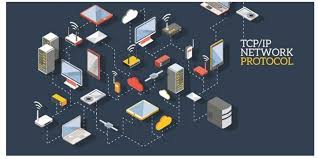TCP Protocol
The benefits of TCP Protocol include: control of flow the rate of data exchange, segment size, network control and flow control. On the other hand, the benefits of UDP Protocol include its time sensitivity and ability of its servers towards answering small queries from a large pool of clients (McKeen & Smith, 2014). The differences between TCP and UDP include: TCP is more reliable than UDP; TCP transmissions are ordered in a sequence whereas messages sent through UDP may not be in a sequence; and finally TCP connection is heavyweight while that of UDP is lightweight (McNurlin, 2009).
TCP Protocol is used in remote surgery because of its preferred in a procedure that requires error correction facilities at network interface level. UDP Protocol is the choice for online gaming and online shopping, which are time sensitive applications for online gaming and the servers are requiring the ability of answering small queries from a large pool of clients for online shopping (O’Brien, 2013).
Basic Data Transfer: The TCP is able to transfer a continuous stream of octets in each direction between its users by packaging some number of octets intosegments for transmission through the internet system. In general, the TCPs decide when to block and forward data at their own convenience.
Reliability: The TCP must recover from data that is damaged, lost, duplicated, or delivered out of order by the internet communication system. This is achieved by assigning a sequence number to each octet transmitted, and requiring a positive acknowledgment (ACK) from the receiving TCP.
The Transmission Control Protocol (TCP) is intended for use as a highly reliable host-to-host protocol between hosts in packet-switched computer communication networks, and in interconnected systems of such networks.
Precedence and Security: The users of TCP may indicate the security and precedence of their communication. Provision is made for default values to be used when these features are not needed.
References
Matthews, H. S. & Williams, E. (2012). Telework Adoption and Energy Use in Building and Transport Sectors in the United States and Japan. Journal of Infrastructural Systems, 11(1), 21-30. doi:10.1061/(ASCE)1076-0342(2005)11:1(21)
McKeen, J. D. & Smith, H. A. (2014). Making IT Happen: Critical Issues in IT Management, Wiley Series in Information Systems. New York, NY: Prentice Hall.
McNurlin, B. (2009). Information Systems Management in Practice (8th ed.). New York, NY: Prentice Hall.
O’Brien, J. (2013). Management Information Systems: Managing Information Technology in the Internetworked Enterprise. Boston, MA: Irwin McGraw-Hill. ISBN 0-07-112373-3
Sardeshmukh, S. R., Sharma, D., & Golden, T. (2012). Impact of Telework on exhaustion and job engagement: A job demands and resources model. New Technology, Work and Employment, 27(3), 193-207. doi:10.1111/j.1468-005X.2012.00284.x
Want help to write your Essay or Assignments? Click here



